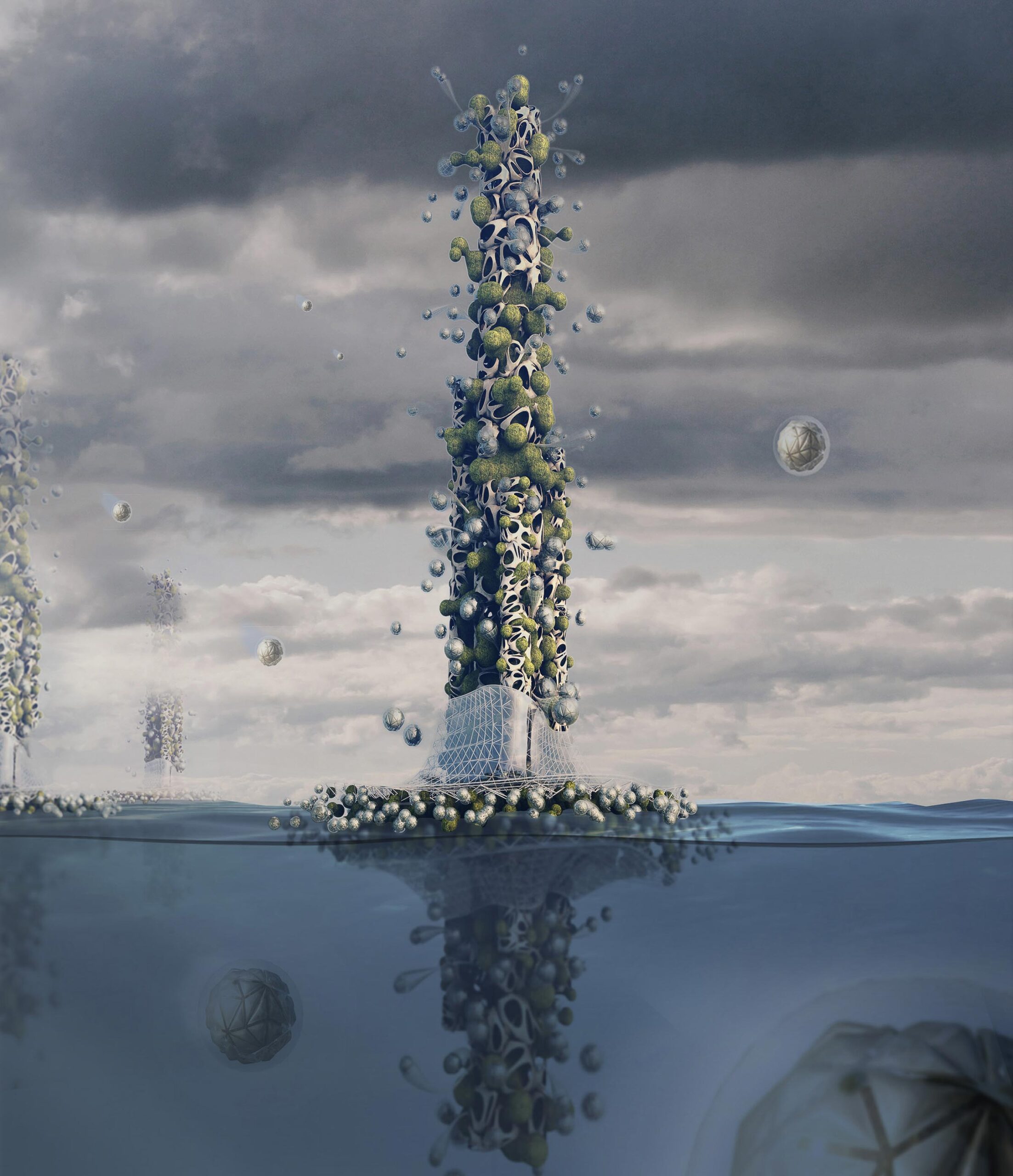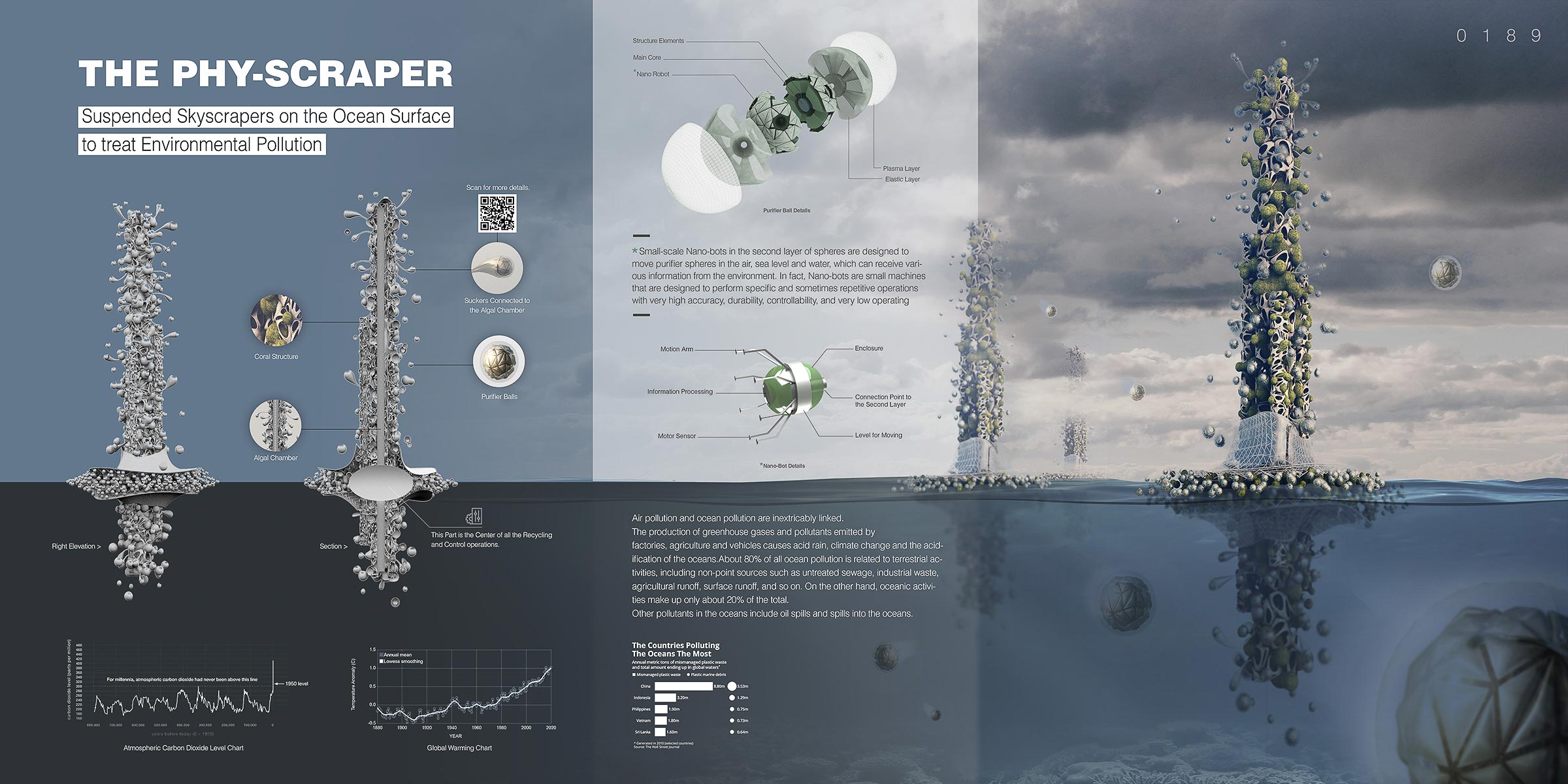
Honorable Mention
2021 Skyscraper Competition
Habib Shahhoseini, Mohaddeseh Eskandarzadeh, Ardalan Kiavar, Saba Salahpour, Ata Rad
Iran
With the industrialization of cities, the presence of pollutants has become one of the serious global environmental problems that have caused pollution of soil, water, air, ocean surface, and even it’s subsurface. The purpose of participating in this competition is to present a mechanism suspended on the surface of the oceans called the Skyscraper of Environmental Care that can be a response to eliminate human environmental pollution in the air, water, and seabeds at the same time.
In the design process, a fungal single-celled living algae (called Physarum) with animal-like behavior (with capabilities such as very high intelligence, self-healing power, rapid movement and growth, high adaptation to the environment, and ultimately immortality) that living in the oceans was used as the main constituent element of the studied skyscraper.
The main design concern was the combination of algal cover with a strong structure as the main structure, in which a coral structure (organic, renewable, and strong structure) was used instead of a concrete and steel structure as being non-renewable. Finally, Physarum algae, which originates from the ocean itself, climb the coral structure and surrounds the entire structure.
The general structure of the skyscraper is such that first a part of the coral structure (manipulated by man) is formed on the surface of the ocean and later it gradually grows vertically and under control from both the upper and lower part (below the ocean surface), forming a coral structure at a height of 600 meters. This structure has a purifying property due to its organic and porous body. Following the growth of the coral structure, a type of algal cover (Physarum) also surrounds this structure. In the center of this structure lies an algal chamber from which suction pumps branched off throughout the structure. After the formation of the central structure, purifier spheres which resemble bubbles surround the coral structure. These balls serve as air, water surface, and underwater ocean purifiers, and because they have an algal layer, they can grow and move, and in the event of a collision with an obstacle, they are able to resist and repair the damaged tissue. Algal balls are charged by the central structure and when they reach the maximum charge, they are separated from the structure and move in a suspended way by the nano-robots in the body in the air, surface, and the ocean floor, performing the purification process.
Ball purification is done in two ways: contamination from oil extraction and factories, etc. is recycled by the ball itself, and the plastic waste from the ocean surface and floor is absorbed by the holes in the balls and transferred to the algal chamber in the central structure where it is emptied. Whenever the balls are depleted of energy, they return to the central structure, are absorbed by the suction pumps in the central structure, and transfer the accumulated contamination into the algal chamber. On the ocean surface where the coral structure had formed, stands a ball as a skyscraper control and recycling center, which performs the recycling operation. This recycling ball is covered by a kind of workspace structure that casts a shadow on the surface of the ocean due to the large width of the skyscraper in that part.
The capabilities of this skyscraper include its environmental compatibility, its purification (air, on water, and seabed at the same time), its ability to reproduce, self-propelled, energy storage, the ability to deform and change its position against obstacles, self-repair, and self-growth, and finally the prevention of global warming.





